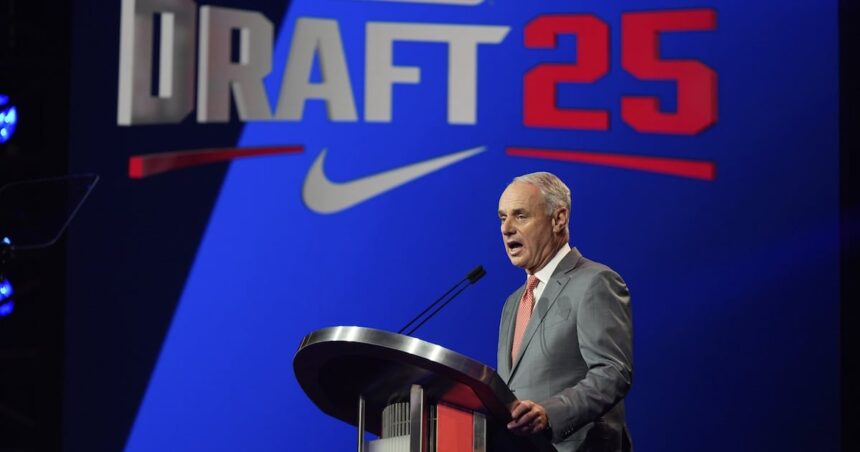The Toronto Blue Jays made a significant move for their future on Sunday night, selecting high school shortstop JoJo Parker with the eighth overall pick in the MLB draft. The selection represents both a strategic investment in raw talent and a glimpse into the organization’s long-term vision.
Parker, an 18-year-old prospect from Macon, Georgia, brings an impressive blend of skills to the Blue Jays system. Standing at 6-foot-2 and weighing 195 pounds, he dominated during his senior season at Howard High School with a .469 batting average, 10 home runs, and 25 stolen bases. These numbers tell only part of the story – scouts have been mesmerized by his exceptional bat speed, natural athleticism, and five-tool potential.
What makes Parker particularly intriguing is his developmental trajectory. Unlike some prospects who enter the draft as relatively finished products, Parker represents something of a blank canvas – tremendous natural ability that remains somewhat unrefined. This represents both opportunity and challenge for the Blue Jays’ player development system.
“Parker has one of the highest ceilings in this draft class,” noted Blue Jays amateur scouting director Shane Farrell during a post-selection press conference. “His combination of athleticism, power potential, and defensive versatility made him impossible to pass up at eighth overall.”
The selection reflects a broader philosophical approach within baseball toward prioritizing raw athletic talent over more polished but potentially lower-ceiling players. In an era where specialized training and development have become increasingly sophisticated, organizations are more willing to bet on transforming athletic gifts into baseball-specific skills.
For Toronto fans following our coverage of cultural trends in sports, Parker’s selection should inspire both patience and excitement. Player development in baseball remains perhaps the most unpredictable aspect of the sport – a reality that makes draft night simultaneously thrilling and frustrating for fan bases.
The Blue Jays’ developmental infrastructure will now face the task of nurturing Parker’s considerable talents. The organization has demonstrated mixed results in recent years with high draft selections, but their player development system has received increased investment and attention under the current front office regime.
Parker’s journey from draft selection to potential major leaguer will likely take several years, following the typical developmental timeline for high school draftees. This represents an interesting cultural inflection point in sports – the tension between immediate results and long-term planning that tests the patience of fan bases and organizational leadership alike.
From a broader cultural perspective, Parker represents the newest character in Toronto’s ongoing baseball narrative. In a city where hockey often dominates the sporting conversation, the Blue Jays have carved out their own cultural significance, with draft nights serving as moments of renewal and possibility.
Whether Parker ultimately develops into the star his potential suggests remains to be seen, but his selection marks another important chapter in the organization’s quest to build a sustainable winner. For Blue Jays fans, the waiting game begins – that peculiar mixture of hope and uncertainty that defines the baseball prospect experience.
As we continue to track the cultural impact of sporting decisions in our opinion section, Parker’s development will provide an interesting case study in how athletic potential transforms into professional reality – or doesn’t. Either way, Sunday night represented a significant investment in the Blue Jays’ future, with a talented Georgian teenager now carrying a piece of Toronto’s baseball dreams.

























